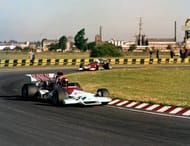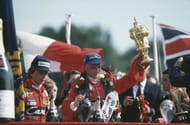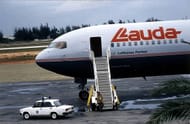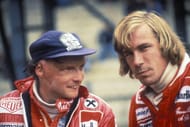He is consistently voted by enthusiasts, analysts and Formula One professionals alike as one of the greatest drivers in the history of the sport. Lauda did not just display speed, but a bravery far beyond anything F1 had seen after that crash at the Nurburgring.Despite suffering third degree burns and falling into a coma as a result of his injuries, Lauda returned to racing only 6 weeks later and finished that race in 4th.Now serving as the non-executive chairman of three-time world champions Mercedes AMG Petronas, Lauda is still closely involved with the sport he had struggled to join nearly 50 years prior.Here are 5 things you may not have known about the three-time world champion, who won with both Scuderia Ferrari and McLaren.
#5 He earns over a million dollars off his cap

You read that right. Lauda’s now immortalized accident at the 1976 German Grand Prix at the Nurburgring saw him receive third degree burns and injuries so severe they saw him lapse into a coma for a number of days afterwards.
Lauda was badly disfigured in the accident, including severe burns on his scalp. He has worn his iconic red cap or ‘cappy’ since 1976 to cover those injuries, and in the years afterwards, several companies paid Lauda to secure advertising space on the cap.
As recently as 2009, Lauda revealed that an advertiser had paid him €1.2m – nearly US$ 1.34 million – for space on the red cap.
#4 He started as a pay driver

In the modern-day iteration of Formula One, pay drivers are looked upon with scorn and derision; most of them secure their seats as a result of their sponsorships, and many in recent years have not lived up to the potential they showed on the junior circuit.
But several of the sport’s best drivers started out that way – among them Lauda and Michael Schumacher.
Lauda’s family never wanted him to race cars, and disapproved of his career choice. The grandson of a wealthy businessman, Lauda started racing minis on his own dime and then to Formula Vee (Volkswagen’s junior Formula racing series). He then drove sports cars, but despite his skill stagnated in motorsports.
He faced so much opposition from his family that he would eventually cut off all contact with them. Now pushing for a further motorsports career and short of funds, Lauda took out a loan of £30,000 on his own life insurance policy to race in Formula 2.
Then, after a lacklustre first season in Formula One, despite impressing several on the circuit, Lauda had to buy himself onto another team – BRM. It was after this that his former teammate at that team, Swiss driver Clay Regazzoni left for Ferrari – and spoke so highly of Lauda to owner Enzo Ferrari that he hired the Austrian, and cleared the debts he had amassed.
And the rest, as they say, is history.
#3 Most of his trophies are now scrap metal

After a less-than-ideal first season in Formula One, Lauda had another two slow seasons before 1974, his debut year with Scuderia Ferrari. That year, he finished the championship in 4th, winning two of the year’s 16 races and finishing on the podium on 5 occasions.
1975 was his breakthrough year, and with 5 wins and another three podium finishes, Lauda won his first ever World Drivers’ Championship. He ended that year with a number of trophies, but he did not covet them as possessions.
Lauda said he had too many “useless” trophies, and ended up donating them to a garage in his native Austria. He exchanged them for something more useful, receiving car washes in exchange for his silverware.
#2 He started his own airline

Lauda Air was founded in 1979 in the Austrian capital of Vienna, and in 1985 began operations in earnest. It was not begun with the idea of being a commercial airliner, but a charter flight and air taxi service instead, and it operated as such in its first few years of existence.
It became an international airliner in 1989, and flew to several locations around the world, including multiple locations in Egypt and across Asia.
Unfortunately, the airliner would have a dark history – on the 26th of May, 1991, a Boeing 767 owned by the airline, flying from Bangkok to Vienna, suffered one of the worst accidents in aviation history and the deadliest involving that type of aircraft.
It was so deadly that the aircraft, when taking a nosedive, broke the sound barrier. Every passenger on board was killed, as were the pilot and copilot, with locals and rescue workers even looting the wreckage.
Lauda became personally heavily involved in the follow-up investigation, travelling to Bangkok in the immediate aftermath of the incident. He was part of on-ground investigations, met with Boeing on several occasions and attended the funerals of a number of the victims of the crash.
It was bought by Austrian Air in 2013.
#1 He was flatmates with James Hunt

The two may have been rivals on the track, and their rivalry was played up and intensified in the Ron Howard film Rush. The two were the closest contenders for the 1976 world championship, one that Hunt would eventually win after Lauda’s horrific accident at the Nurburgring halfway through the season caused him to sit out two races, including his home race, the Austrian Grand Prix.
They famously ribbed each other in the media, with Lauda one of the first to describe and poke fun at Hunt’s playboy antics off the track. In reality, the two were close friends who celebrated each other’s milestones.
Lauda made his Formula One debut in 1971 and Hunt only two seasons later, and in the earliest part of both their careers, the two shared a flat in North London – the city where Hunt was born, grew up and passed away in.